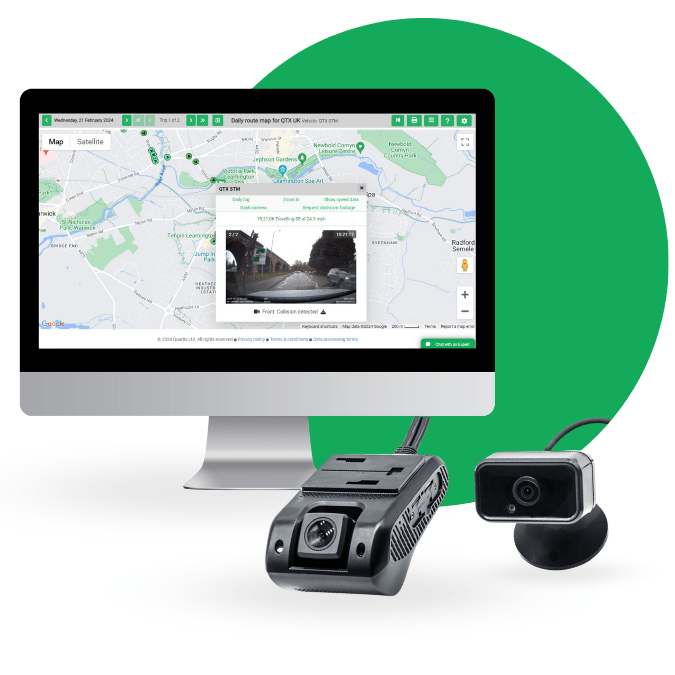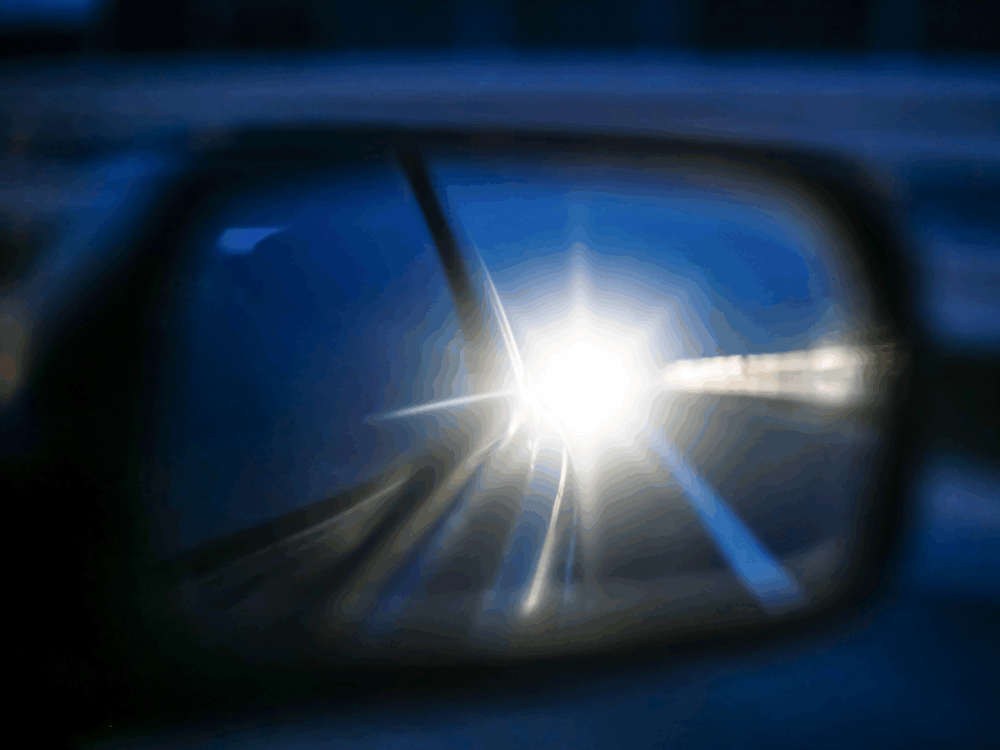As the darker evenings set in, there is one thing that drivers can’t ignore: bright headlights are making it harder to see and be seen.
Recent research by the RAC shows 61% of drivers say glare from oncoming headlights has increased over the past year, and one in four are cutting back on night-time driving because of it. A further 5% have stopped driving at night altogether – a striking sign of how widespread the issue has become.
The Department for Transport (DfT) has now asked the Transport Research Laboratory (TRL) to investigate what’s behind this surge in glare and how modern headlight design, such as bright LEDs and high-mounted SUV lamps, may be contributing. The results will shape the government’s upcoming national road-safety strategy.
If you manage a fleet of company vehicles, this is a growing safety and compliance issue that deserves serious attention. Headlights that are too bright, misaligned, or dirty can easily impact other road users visibility – the Highway Code states that lights “must not be used in a way that dazzles or discomforts other road users.”
With more journeys now taking place in darkness, headlight maintenance deserves as much attention as tyres, brakes, or mirrors in your fleet safety checks.
Why headlight glare is becoming a bigger hazard
TRL and road-safety experts have identified several contributing factors that are making headlight glare more acute:
- Brighter, more intense lighting technology: Modern vehicles increasingly use LED or bi-xenon head-lamps, which produce a stronger, whiter and more focused beam compared to older halogen systems. The RAC points out the “whiter, more focused” beam can give drivers using it a better view – but for on-coming traffic, it can be blinding.
- Higher ride-heights and larger vehicles: Many SUVs and vans have headlights mounted higher off the ground, which means the light beam may hit other drivers’ faces or higher eye-level, increasing glare.
- Misalignment and maintenance issues: Even a well-designed lighting system can cause glare if the head-lamps are misaligned, or lenses are dirty, clouded or scratched. Some fleets may overlook light alignment as part of routine checks.
- Ambient light conditions changing: With earlier dusk, more driving happens in darkness, meaning drivers are exposed to glare for longer periods. For ageing drivers with slower adaptation to glare, the effect is magnified.
- Aftermarket or illegal bulbs: Retrofit LED or projector bulbs, when not properly fitted or aligned, can exceed legal brightness levels and massively increase dazzle for other road users.
The DfT’s project aims to map all these factors and identify new safety measures.

Fleet actions to reduce glare and improve safety

1. Make lighting checks a core part of your fleet inspections
Ensure head-lamps (and all forward-facing lights) are routinely checked for correct alignment, clean lenses, and correct bulb types. Misaligned or overly bright lights can dazzle other road users and increase risk of collisions or complaints. Stay ahead of the curve by having this as standard in your safety inspections.

2. Update driver training and night-time driving policy
Encourage drivers to:
- Pay attention to whether their headlights are dazzling other drivers or reflecting excessively back at them – this means they may be misaligned.
- Safely reduce speed or pull over (where lawful) if they are dazzled by on-coming headlights, until vision recovers. Dazzle can take 1–5 seconds to clear, which at 60 mph covers up to ~160 metres!
- Use dipped beams in built-up areas and only full beams when safe and legal.
- Keep windscreen and head‐lamp lenses clean, as dirt or haze increases glare issues.
- Report any issues with other vehicles’ lights causing glare. This feedback can feed into risk assessments and procurement decisions.
- Make sure their own vision correction is up to date (clean lenses, correct prescription), especially since optics groups say drivers are reporting more difficulty seeing whilst dazzled.

3. Review procurement: ask the right questions
When acquiring new vehicles, include lighting design in your specifications:
- What type of head-lamp system is used (LED vs halogen)?
- Is there automatic head-lamp levelling or height adjustment given load/ride-height changes?
- What is the beam pattern and how does it affect other road users (especially in mixed traffic with cars/vans/pedestrians)?
- Are aftermarket modifications (bulb upgrades, projector conversions) permitted or restricted? The DfT’s strategy may lead to tighter requirements or standards in future.

4. Reassess night-time driving risks
If your drivers regularly operate at night, review fatigue management, shift scheduling, and lighting conditions.
Streamline safety checks with the Quartix Check app
Manual paperwork and inconsistent vehicle checks can let small issues, like misaligned headlights, slip through the cracks. That’s where Quartix Check, our vehicle inspections app for your drivers, adds real value.
The app allows fleet drivers to:
- Complete daily walkaround checks directly on their phone or tablet
- Log faults such as headlight misalignment, lens damage, or warning lights instantly
- Capture photos and notes to document each inspection
- Automatically report defects to fleet managers for action
- Store a full digital record of compliance, inspections, and repairs
For managers, it means greater oversight and confidence that visibility and lighting checks are done properly, every time.
Integrating the Quartix app into your inspection process also supports the kind of digital traceability regulators increasingly expect as part of proactive fleet safety management.

Add dashcams for protection and peace of mind
Even with well-maintained vehicles, glare and other visibility hazards can still contribute to near-misses or incidents, particularly in winter darkness.
Dashcams have become a vital layer of fleet safety, providing:
- Clear evidence in the event of an accident or claim
- Protection for drivers against false accusations
- Incident analysis to identify root causes, including glare-related factors
When paired with regular inspections and clear safety policies, dashcams help protect both drivers and your business reputation, giving you clarity when visibility fails.

Looking ahead
Headlight glare is climbing up the UK’s road-safety policy agenda. It might seem like an unavoidable part of winter driving, but with the right maintenance, driver awareness, and inspection tools, fleets can drastically reduce the risk.
With nearly four in five drivers worried about dazzling headlights in darker evenings, and regulatory focus intensifying, now is the time to ensure your fleet’s lighting is as safe for others as it is for your drivers. The message is simple: see and be seen, safely.
Useful links
Highway Code – Rule 114: Use of lights
RAC: Drivers concerned about dazzling headlights




